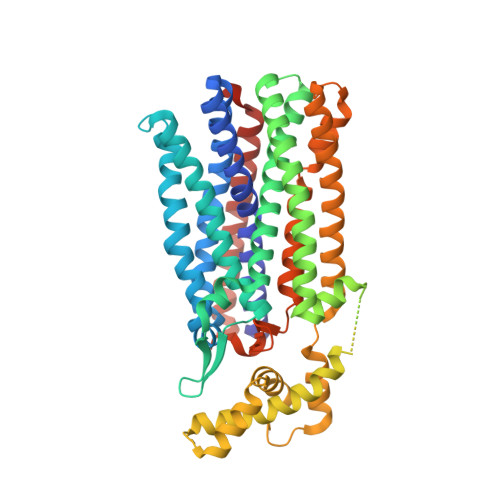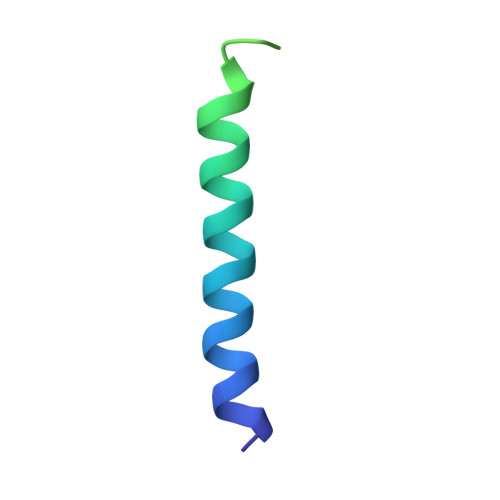Mechanistic and structural diversity between cytochrome bd isoforms of Escherichia coli .
Grund, T.N., Radloff, M., Wu, D., Goojani, H.G., Witte, L.F., Josting, W., Buschmann, S., Muller, H., Elamri, I., Welsch, S., Schwalbe, H., Michel, H., Bald, D., Safarian, S.(2021) Proc Natl Acad Sci U S A 118
- PubMed: 34873041
- DOI: https://doi.org/10.1073/pnas.2114013118
- Primary Citation of Related Structures:
7OY2 - PubMed Abstract:
The treatment of infectious diseases caused by multidrug-resistant pathogens is a major clinical challenge of the 21st century. The membrane-embedded respiratory cytochrome bd -type oxygen reductase is a critical survival factor utilized by pathogenic bacteria during infection, proliferation and the transition from acute to chronic states. Escherichia coli encodes for two cytochrome bd isoforms that are both involved in respiration under oxygen limited conditions. Mechanistic and structural differences between cydABX ( Ecbd-I ) and appCBX ( Ecbd-II ) operon encoded cytochrome bd variants have remained elusive in the past. Here, we demonstrate that cytochrome bd - II catalyzes oxidation of benzoquinols while possessing additional specificity for naphthoquinones. Our data show that although menaquinol-1 (MK1) is not able to directly transfer electrons onto cytochrome bd-II from E. coli , it has a stimulatory effect on its oxygen reduction rate in the presence of ubiquinol-1. We further determined cryo-EM structures of cytochrome bd - II to high resolution of 2.1 Å. Our structural insights confirm that the general architecture and substrate accessible pathways are conserved between the two bd oxidase isoforms, but two notable differences are apparent upon inspection: (i) Ecbd-II does not contain a CydH-like subunit, thereby exposing heme b 595 to the membrane environment and (ii) the AppB subunit harbors a structural demethylmenaquinone-8 molecule instead of ubiquinone-8 as found in CydB of Ecbd-I Our work completes the structural landscape of terminal respiratory oxygen reductases of E. coli and suggests that structural and functional properties of the respective oxidases are linked to quinol-pool dependent metabolic adaptations in E. coli .
- Department of Molecular Membrane Biology, Max Planck Institute of Biophysics, D-60438 Frankfurt am Main, Germany.
Organizational Affiliation:
























